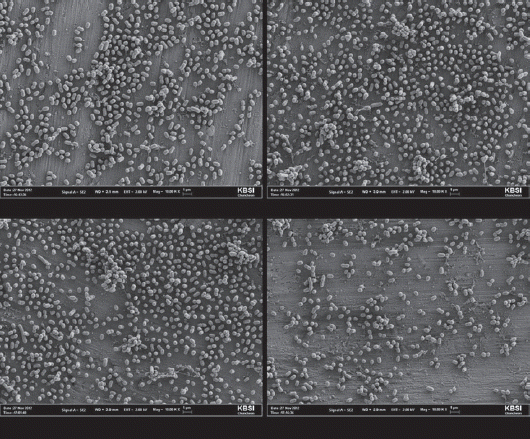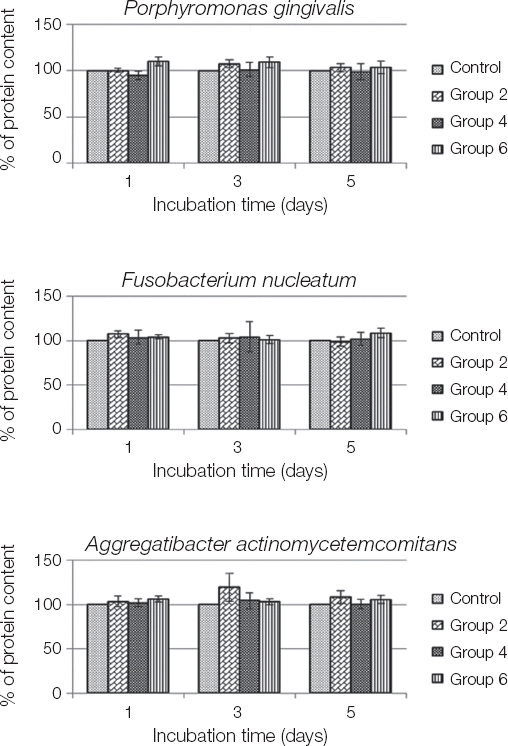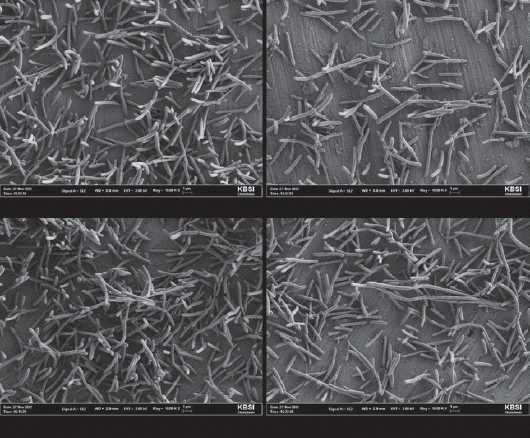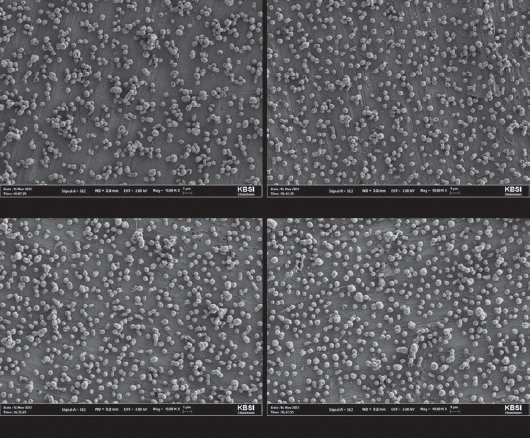1. Adell R, Lekholm U, Rockler B, Brånemark PI. A 15-year study of osseointegrated implants in the treatment of the edentulous jaw. Int J Oral Surg. 1981; 10:387–416. DOI:
10.1016/S0300-9785(81)80077-4.
2. Buser D, Mericske-Stern R, Bernard JP, Behneke A, Behneke N, Hirt HP, Belser UC, Lang NP. Longterm evaluation of non-submerged ITI implants. Part 1:8-year life table analysis of a prospective multi-center study with 2359 implants. Clin Oral Implants Res. 1997; 8:161–72. DOI:
10.1034/j.1600-0501.1997.080302.x. PMID:
9586460.
3. Romeo E, Lops D, Margutti E, Ghisolfi M, Chiapasco M, Vogel G. Long-term survival and success of oral implants in the treatment of full and partial arches: a 7-year prospective study with the ITI dental implant system. Int J Oral Maxillofac Implants. 2004; 19:247–59. PMID:
15101597.
6. Quirynen M, Listgarten MA. Distribution of bacterial morphotypes around natural teeth and titanium implants ad modum Brånemark. Clin Oral Implants Res. 1990; 1:8–12. DOI:
10.1034/j.1600-0501.1990.010102.x. PMID:
2099212.
7. Pontoriero R, Tonelli MP, Carnevale G, Mombelli A, Nyman SR, Lang NP. Experimentally induced periimplant mucositis. A clinical study in humans. Clin Oral Implants Res. 1994; 5:254–9. DOI:
10.1034/j.1600-0501.1994.050409.x. PMID:
7640340.
8. Leonhardt A, Berglundh T, Ericsson I, Dahlén G. Putative periodontal pathogens on titanium implants and teeth in experimental gingivitis and periodontitis in beagle dogs. Clin Oral Implants Res. 1992; 3:112–9. DOI:
10.1034/j.1600-0501.1992.030303.x. PMID:
1290791.
10. Quirynen M, Marechal M, Busscher HJ, Weerkamp AH, Darius PL, van Steenberghe D. The influence of surface free energy and surface roughness on early plaque formation. An in vivo study in man. J Clin Periodontol. 1990; 17:138–44. DOI:
10.1111/j.1600-051X.1990.tb01077.x. PMID:
2319000.
11. Bollen CM, Papaioanno W, Van Eldere J, Schepers E, Quirynen M, van Steenberghe D. The influence of abutment surface roughness on plaque accumulation and peri-implant mucositis. Clin Oral Implants Res. 1996; 7:201–11. DOI:
10.1034/j.1600-0501.1996.070302.x. PMID:
9151584.
12. Teughels W, Van Assche N, Sliepen I, Quirynen M. Effect of material characteristics and/or surface topography on biofilm development. Clin Oral Implants Res. 2006; 17(Suppl2):68–81. DOI:
10.1111/j.1600-0501.2006.01353.x. PMID:
16968383.
13. Quirynen M, Bollen CM. The influence of surface roughness and surface-free energy on supra- and subgingival plaque formation in man. A review of the literature. J Clin Periodontol. 1995; 22:1–14. DOI:
10.1111/j.1600-051X.1995.tb01765.x. PMID:
7706534.
14. Bollen CM, Lambrechts P, Quirynen M. Comparison of surface roughness of oral hard materials to the threshold surface roughness for bacterial plaque retention: a review of the literature. Dent Mater. 1997; 13:258–69. DOI:
10.1016/S0109-5641(97)80038-3.
15. Aykent F, Yondem I, Ozyesil AG, Gunal SK, Avunduk MC, Ozkan S. Effect of different finishing techniques for restorative materials on surface roughness and bacterial adhesion. J Prosthet Dent. 2010; 103:221–7. DOI:
10.1016/S0022-3913(10)60034-0.
16. Dionysopoulos P, Gerasimou P, Tolidis K. The effect of home-use fluoride gels on glass-ionomer, compomer and composite resin restorations. J Oral Rehabil. 2003; 30:683–9. DOI:
10.1046/j.1365-2842.2003.01104.x. PMID:
12791152.
17. Benderli Y, Gökçe K, Kazak M. Effect of APF gel on micromorphology of resin modified glassionomer cements and flowable compomers. J Oral Rehabil. 2005; 32:669–75. DOI:
10.1111/j.1365-2842.2005.01484.x. PMID:
16102080.
18. Walker MP, Ries D, Kula K, Ellis M, Fricke B. Mechanical properties and surface characterization of beta titanium and stainless steel orthodontic wire following topical fluoride treatment. Angle Orthod. 2007; 77:342–8. DOI:
10.2319/0003-3219(2007)077[0342:MPASCO]2.0.CO;2.
19. Khoury ES, Abboud M, Bassil-Nassif N, Bouserhal J. Effect of a two-year fluoride decay protection protocol on titanium brackets. Int Orthod. 2011; 9:432–51. DOI:
10.1016/j.ortho.2011.09.006. PMID:
22032966.
20. Stájer A, Urbán E, Pelsõczi IK, Mihalik E, Rakonczay Z, Nagy K, Turzó K, Radnai M. Effect of caries preventive products on the growth of bacterial biofilm on titanium surface. Acta Microbiol Immunol Hung. 2012; 59:51–61. DOI:
10.1556/AMicr.59.2012.1.6. PMID:
22510287.
21. Pröbster L, Lin W, Hüttemann H. Effect of fluoride prophylactic agents on titanium surfaces. Int J Oral Maxillofac Implants. 1992; 7:390–4.
22. Hix JO, O'Leary TJ. The relationship between cemental caries, oral hygiene status and fermentable carbohydrate intake. J Periodontol. 1976; 47:398–404. DOI:
10.1902/jop.1976.47.7.398. PMID:
1065737.
24. Cobb HB, Rozier RG, Bawden JW. A clinical study of the caries preventive effects of an APF solution and APF thixotropic gel. Pediatr Dent. 1980; 2:263–6. PMID:
6941001.
25. Horowitz HS, Doyle J. The effect on dental caries of topically applied acidulated phosphatefluoride: results after three years. J Am Dent Assoc. 1971; 82:359–65. DOI:
10.14219/jada.archive.1971.0063.
26. Reclaru L, Meyer JM. Effects of fluorides on titanium and other dental alloys in dentistry. Biomaterials. 1998; 19:85–92. DOI:
10.1016/S0142-9612(97)00179-8.
27. Schiff N, Grosgogeat B, Lissac M, Dalard F. Influence of fluoride content and pH on the corrosion resistance of titanium and its alloys. Biomaterials. 2002; 23:1995–2002. DOI:
10.1016/S0142-9612(01)00328-3.
28. Toniollo MB, Tiossi R, Macedo AP, Rodrigues RC, Ribeiro RF, Mattos Mda G. Effect of fluoridecontaining solutions on the surface of cast commercially pure titanium. Braz Dent J. 2009; 20:201–4. DOI:
10.1590/S0103-64402009000300005. PMID:
19784464.
29. Amoroso PF, Adams RJ, Waters MG, Williams DW. Titanium surface modification and its effect on the adherence of Porphyromonas gingivalis: an in vitro study. Clin Oral Implants Res. 2006; 17:633–7. DOI:
10.1111/j.1600-0501.2006.01274.x. PMID:
17092220.
30. Kim YJ, Jang KT, Garcia-Godoy F. Effect of acidulated phosphate fluoride (APF) gel on the adherence of cariogenic bacteria to resin composites. Am J Dent. 2005; 18:91–4. PMID:
15973825.





 PDF
PDF Citation
Citation Print
Print






 XML Download
XML Download